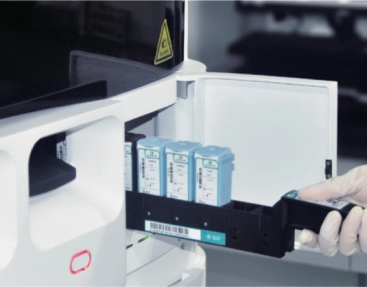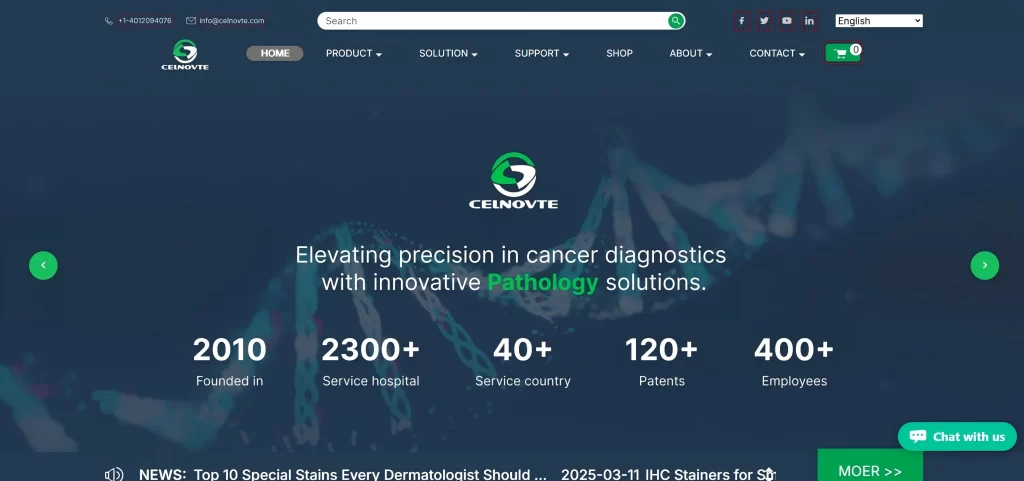How Multiplex IHC is Advancing Neuroscience Research
2025-07-25
By admin
Neuroscience is growing fast. New tools help scientists study the brain in exciting ways. One amazing tool is Multiplex Immunohistochemistry (mIHC). It’s changing how we learn about brain diseases like Alzheimer’s. This method lets researchers spot many markers in one sample. It’s super helpful for brain biomarker detection and understanding neuropathology.
In this blog, we’ll talk about how mIHC in neuroscience is making big discoveries. We’ll focus on its use for Alzheimer’s markers like tau protein, amyloid plaques, and synaptic markers. We’ll also show how tools from Celnovte Biotech make this possible.
Why mIHC is Great for Neuroscience
Multiplex Immunohistochemistry, or mIHC, is a cool way to see many proteins in one brain sample. Unlike older methods that check one marker at a time, mIHC uses special dyes and pictures to show several proteins at once. This is perfect for neuroscience. The brain is super complex, with lots of cells working together. mIHC in neuroscience helps scientists see these details clearly.
How mIHC Helps with Brain Biomarker Detection
The brain has many cell types. Each one does something special. In diseases, tiny changes in proteins can cause big problems. mIHC in neuroscience makes it easier to spot these changes. Here’s how it helps:
- See Many Markers at Once: mIHC can show proteins like tau, amyloid-beta, and synaptic markers together. This helps scientists understand how they connect.
- Save Tissue Samples: By checking multiple markers in one slice, mIHC uses less tissue. This is great for rare samples.
- Get Clear Data: Tools like Celnovte Biotech’s mIHC Kitswork with machines to give exact, reliable results.
These features make mIHC a must-have for studying brain diseases.
mIHC in Alzheimer’s Disease Studies
Alzheimer’s disease (AD) is a tough condition. It causes amyloid plaques, tau tangles, and synapse loss. mIHC in neuroscience is awesome for studying these issues. It gives scientists a clear picture of what’s happening in the brain.
Looking at Amyloid Plaques and Tau Protein
Amyloid plaques and tau protein are big signs of Alzheimer’s. mIHC helps scientists study them closely. Here’s what it can do:
- Show Plaques and Tangles Together: mIHC spots amyloid-beta and tau in one sample. This shows how they work together in the brain.
- Track Disease Changes: Scientists can count plaques and tangles in areas like the hippocampus or cortex. This helps them see how Alzheimer’s grows.
- Check Brain Inflammation: mIHC can show microglial markers (like Iba1) with amyloid and tau. This reveals how inflammation affects the disease.
For example, Celnovte Biotech’s Multiplex IHC Kits can spot 6-8 markers at once. This gives a full view of Alzheimer’s changes in one test.
Exploring Synaptic Markers in Neuropathology
Synapses are where brain cells talk to each other. In Alzheimer’s, synapses often disappear, causing memory problems. mIHC in neuroscience helps study synaptic markers like PSD-95 and synaptophysin. It also looks at other disease markers. This helps scientists:
- Find Synapse Loss: mIHC shows where synapses are missing near plaques or tangles.
- Link Cell Changes: It checks how neuron loss or glial activity affects synapses.
- Test New Medicines: mIHC tracks if drugs help keep synapses healthy by watching marker changes.
Using tools like Celnovte Biotech’s mIHC Staining Tool, scientists get sharp images and exact data. This boosts our knowledge of synapse problems in Alzheimer’s.
Understanding Brain Inflammation
Inflammation is a big part of Alzheimer’s. Cells like microglia and astrocytes play a role. mIHC in neuroscience lets scientists see these cells and disease markers together. Here’s a table showing what mIHC can track:
|
Marker |
What It Does |
How It Helps in AD |
|
Iba1 |
Marks microglia |
Shows inflammation near plaques |
|
GFAP |
Marks astrocytes |
Checks astrocyte activity in AD areas |
|
Tau protein |
Forms tangles |
Links to inflammation changes |
|
Amyloid-beta |
Forms plaques |
Shows how plaques cause inflammation |
This detailed view helps scientists understand how inflammation affects Alzheimer’s. It also helps create new treatments.
Why mIHC Beats Older Methods
Old immunohistochemistry only checks one marker at a time. It’s good but not enough for complex brain studies. mIHC is much better. Here’s why:
- Checks Many Markers: mIHC looks at several proteins in one go. This cuts down on errors and saves samples.
- Very Accurate: Reagents like Celnovte Biotech’s Immune Chromogenic Reagent Double Stain Imake sure markers are clear and correct.
- Easy to Use: Machines like those from Celnovte Biotechmake mIHC fast and consistent.
- Gives Lots of Data: mIHC works with digital tools to show where and how much of each marker is in the brain.
These benefits make mIHC a top choice for neuroscience research, especially for tricky diseases like Alzheimer’s.
About Celnovte Biotech
Celnovte Biotech is a top company in medical tools. They focus on making and selling advanced diagnostic reagents and machines.
Their Multiplex Immunohistochemical (mIHC) Kits and automated multiplex IHC stainers are built for scientists studying diseases like Alzheimer’s. Celnovte Biotech offers reliable, precise tools that help make big discoveries in neuroscience. Check out their full range of immunohistochemistry products at Celnovte Biotech’s website.
FAQs About mIHC in Neuroscience
Q1: How does mIHC make brain biomarker detection better than older methods?
A: mIHC in neuroscience lets scientists see many markers, like tau protein and amyloid plaques, in one sample. It gives a fuller picture of brain changes. Plus, it saves tissue and gives clear, exact results.
Q2: Can mIHC study synaptic markers in Alzheimer’s disease?
A: Yes! mIHC in neuroscience is great for checking synaptic markers like PSD-95 and synaptophysin. It also looks at other disease markers. This shows how synapses change in Alzheimer’s.
Q3: How does mIHC help with neuroinflammation in neuropathology?
A: mIHC in neuroscience spots inflammation markers like Iba1 and GFAP alongside tau protein. This shows how inflammation works with disease changes in Alzheimer’s.
Q4: Is mIHC good for measuring brain markers in neuroscience research?
A: Definitely. mIHC in neuroscience, with digital tools, gives exact numbers on marker amounts and locations. This makes brain biomarker detection super accurate.
Q5: Why is mIHC important for studying Alzheimer’s disease?
A: mIHC in neuroscience helps scientists see multiple markers like amyloid plaques and tau protein at once. This gives a clear view of Alzheimer’s changes, helping find new treatments.
Discover More About Neuroscience Research
Multiplex Immunohistochemistry is changing neuroscience research. It’s a powerful tool for brain biomarker detection and understanding neuropathology. Whether you’re studying Alzheimer’s, synapses, or inflammation, mIHC in neuroscience gives clear, detailed results. Want to learn how tools from Celnovte Biotech can help your research? Visit their website to explore their top-notch mIHC solutions today.





